As an Amazon Associate I earn from qualifying purchases.
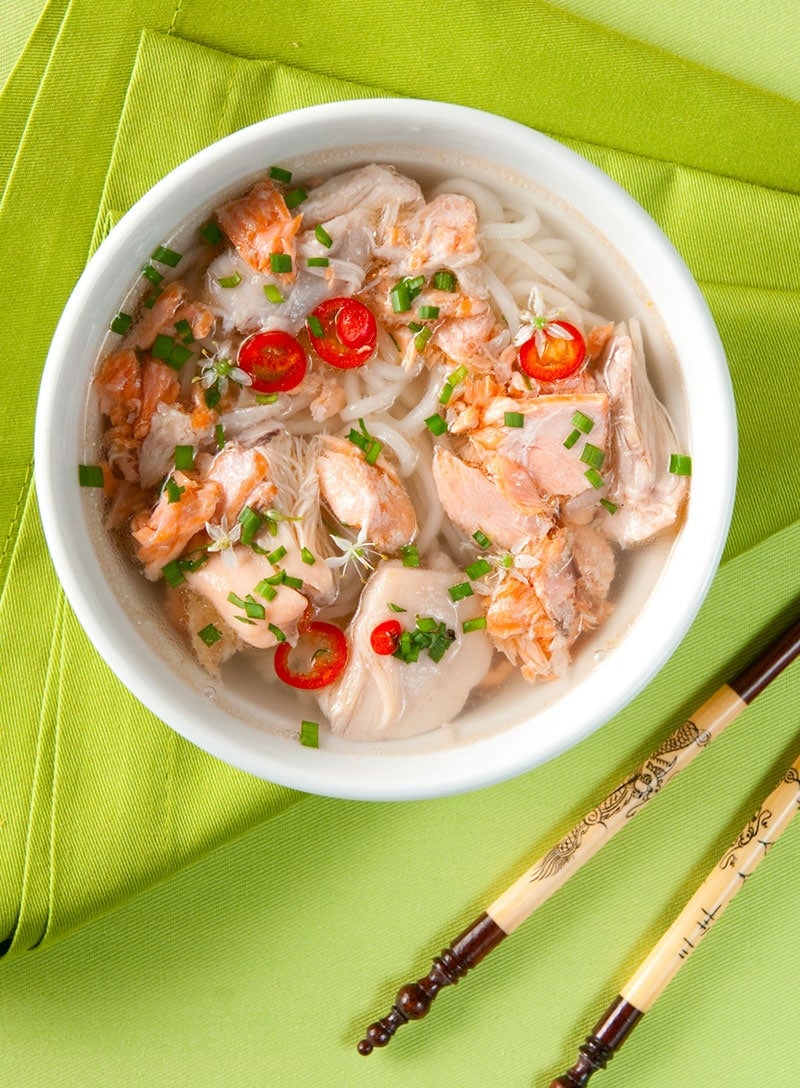
Salmon head soup has a more gruesome name than the dish actually is. Yes, it is indeed a fish head soup, and you do use salmon heads to made the broth, but there are no eyeballs, bones or jaws floating around.
It is actually a refined, Japanese-style miso soup with noodles. It doesn’t even take very long to make, and this soup is so, so satisfying. You’ll never toss those fish heads again.
And while I prefer to use large salmon heads here, you can make this a generic fish head soup by switching up the species. Cod and striped bass heads are common in the Northeast, grouper and snapper in the Gulf, lingcod and halibut in the Pacific. Inland, I’d use big pike or bass. All these are lean fish, however.
Salmon heads make this a luxurious broth — it’s the fat — so if you want to substitute other species that will give you a similar effect, try lake trout, large char or other trout, catfish, cobia, sturgeon, amberjack or tuna.
Here is a good list of fatty fish you can try.
Two important things to remember when you use salmon or other fatty fish are 1) to never let this broth boil, or it will get overly fishy and cloudy (think making a tea rather than boiling a soup); and 2) it doesn’t keep well. Eat your fish head soup that evening or the day after. Beyond that, and things can get stinky.
Salmon Head Soup
Ingredients
- 4 large salmon heads, gills removed
- 1 small onion chopped, about 1 cup
- A 2-inch piece of dried kombu seaweed (optional)
- A 3-inch piece of slivered ginger
- Salt
- 1/4 cup 1/4 cup mirin (sweet wine)
- Asian noodles somen, udon or rice noodles
- 1 tablespoon soy sauce
- 3 tablespoons white miso paste
- Chives and sliced chiles, for garnish
Instructions
- Wash the salmon heads well to remove any blood or gills. Gills will ruin the broth by making it bitter and cloudy. Cover the heads with water in a large pot or Dutch oven. Add the onion, kombu and ginger and bring to a bare simmer. Do not let this boil. Simmer gently for 20 to 30 minutes.
- Strain the broth and save the heads. Pick out all the meat from the heads, especially the cheek meat. Reserve in a bowl.
- Return the broth to a clean pot and add the mirin. Heat but do not let boil. Add the soy sauce. If the broth still needs salt, add salt -- not more soy sauce, as that will make the broth too dark.
- Bring another pot of salted water to a boil: This is for the noodles. Cook the noodles according to the directions on the package.
- Ladle out some broth into soup bowls. Add a heaping teaspoon of miso (or more) to each bowl and stir to combine. Portion out the noodles to each bowl. Add the salmon meat on top of the noodles. Each person should get at least one cheek. Cover with more broth, garnish with chives and sliced chiles and serve at once.
Nutrition
Nutrition information is automatically calculated, so should only be used as an approximation.
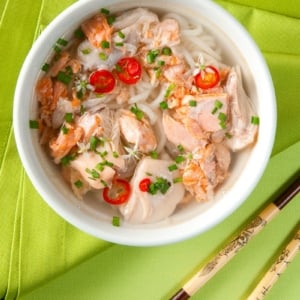


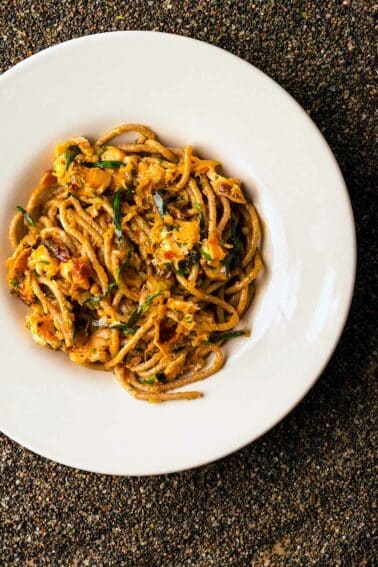
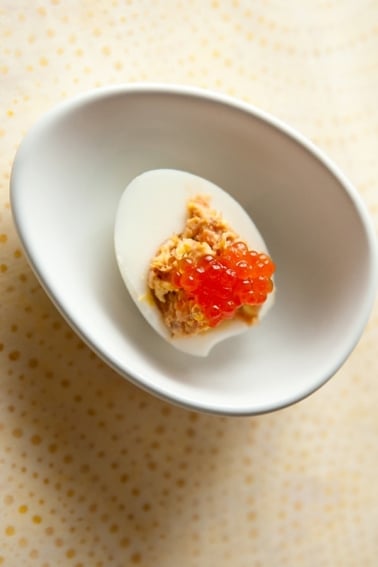
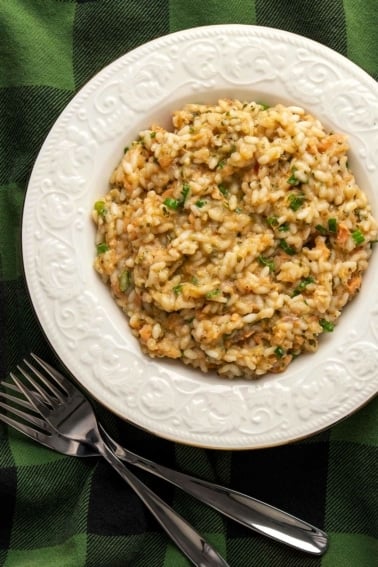
I simmered for 30 minutes and then had trouble separating flesh from the rest because it was a mushy blob. Maybe simmering only 20 minutes would have been better. Remove seeds from the chilis. I ended up with less salmon in each bowl than the photo shows. My grocery store fish heads already had the gills removecd.
Made this for the first time tonight with coho heads. Universally voted amazing! Thanks Hank!
Hello,
I’m headed out ice fishing for pike next weekend. We always do a big fish fry with the fillets during this particular weekend. I’d love to try and use the heads as well but I won’t be able to do it when I catch these fish. Is it possible to freeze the heads and use them later? If so how would you freeze them? Would freezer paper work ok or do I need to bring a vacuum sealer?
Doug
Douglas: Yep, you can do that. I’d put them in a freezer bag. So long as you use them within a few months.
My Great-Aunt and 1 Aunt (both named Josephine) made a West Coast Canadian First Nations version of this they called oops squee–phonetic spelling
Wondering if anyone has come across wild salmon, king salmon, to be exact, that give the broth a pink oil on top? Does this mean I caught an escaped farmed fish?
Hank, would this work with steelhead? And by steelhead I don’t mean real pacific steelhead but Lake Erie steelhead
Cole: I am sure it will.
Hi, I’m a new diabetic, I wish you can see my salmon head and tail, it was fresh cut, and healthy looking, I’m trying your recipe, can I put the tail in as a stand in head for a second soup another day?
Torrie: Put them both in at the same time and make more soup. No real meat in the tail.
Hank- any reason I shouldn’t use the whole carcass with fins attached? Guts are obviously removed. I see the notes on removing gills, but curious why this doesn’t include the rest of the fish. As always, thanks so much for all you do.
Brett: Nope, no reason.
I just made this with the heads of three early season coho. I used rice instead of noodles, because someone had used my rice noodles, but it was delicious and refreshing and hearty at the same time. Thank, Hank.
This might be a dumb question, but do you somehow remove the scales off the heads before cooking or is the skin removed while picking the meat off the skull?
Bradley: Nope. Just leave them as is. Strain the stock afterwards, which removes any stray scales.
Last night was my first crack at makin’ Salmon head Chowder,….I tried to brown one head in my newly seasoned Lodge cast iron skillet and stuck a little, trimmed off the fins and that was all, put it in my 61/2 qt pressure cooker covered the head with filtered water and pressured that baby up for a couple of hours with the fish head, carrots, celery , leeks, whole pepper corns, let it depressurize on it’s own,….then added a B size Yukon gold and a taro root the same size and let it simmer until they softened,….the taste was pretty strong so I run off some onion on my mandolin slicer and it seemed to tone it down,…I’ll warm up what’s leftover tonight but,…I’m gunna have cornbread with it instead of crackers n’ butter. Bon Appetito !!!
I’ve been making this for years without knowing it’s roots. I normally add heaps of garlic in mine along with the other ingredients, it turns into a delicious and energizing fare. Will try with noodles next time.
This is one of the more delicious things I’ve made recently. And for you Hank, it’s pretty dang simple (read easy and quick). While I love your recipes, and rely on them for almost all of my fish and game cooking, I definitely plan a lot of kitchen time before embarking on a new one.
I’ll second Aaron’s comment about freshly caught salmon not having a terribly fishy flavor. But, I will also say that I’ve been using frozen heads for this recipe (the soup may not be “gruesome”, but opening up my freezer has been an alarming experience for some), and I haven’t noticed too much of a difference in quality between fresh and frozen. I did remove the gills and spinal gunk before freezing, so maybe that helped. Thanks for the recipe. Your right, I definitely won’t be throwing out those heads anymore. In fact I’m now a bit of a vulture, lying in wait while others clean their fish, hoping to glean their unwanted salmon heads!
I’ve been making this one for years. My kids love it and start to ask for it when I haven’t made it for a while. I usually split the salmon heads with a cleaver to help render them. I also add just a drizzle of sesame oil to the broth when adding the mirin and ponzu. Sooo good!
Hank said that salmon has a strong flavor and wouldn’t make a good seafood stock compared to sea bass and other fish. I used a salmon head that i caught fresh here in Alaska and wanted to point out that *freshly caught* salmon lacks a fishy flavor. salmon that has been frozen for several weeks or sat in the fridge for days on ice tends to get fishy.
I was out of konbu (also spelled kombu) when i made this recipe. The konbu I added a day later had a far “fishier” flavor than the salmon head! Fortunately, I love konbu. If bothered by the fishy flavor, it’s milder if you use fresh ginger in the broth.
Got three salmon heads at my local grocery for $3.40 total. I don’t think anyone wanted them or knew what to do with them. Used my instant pot on “less” slow cook for about 35 min which was perfect. Otherwise made as directed. Made my 15 yr old pick the meat off the head with me. He thinks it was worth it because he’s on his 3rd bowl. Delicious, but not really simple. I also threw the bones and aromatics back into a different pot to simmer into a bone broth. We shall see.
I bought 5 large heads from an Asian market for around $20, forgot to have them remove the gills, I did it, a messy job.. I used a large stock pot. I didn’t let them boil. I got a large bowl of meat from cheeks and part of the filet they left on behind the head and all the gelatinous goodness from inside the head. I made one mistake—I put mushrooms in the clear broth after, thinking they would be great in the soup. They made the broth bitter and turned it black! They were dark mushrooms, I should have used the lighter colored ones from Safeway. Ate the soup anyway, not bad, just a bit bitter. I could have added mushrooms to the Udon noodles separately. Oh well, live and learn! Joe
Once again thank you for a great odds-n-ends recipe. I made this tonight using the heads from our friend’s catch and ours. They normally would’ve been tossed in a hole in the backyard to fertilize a garden bed, but this is so much better.
I am one of those odd cats that loves eating fish, from head to tail. Not in public, though! Only in the privacy of my home…because it’s quite a messy, though pleasurable, process. This includes deep fried, steamed, poached, roasted, or in soups.
I was hoping to find a great recipe therefore, for four lovely, fresh salmon heads I bought today at the supermarket. I am one of those sorts who actually enjoy the eyes, the brain, and all edible parts. Maybe you can suggest a recipe for me? This soup sounds nice, but it sounds like the recipe would have one discard much of the parts I would relish.
Thanks in advance!
Thank you for this fabulous recipe! I have a very large salmon head and was at a loss for what to do with it- this is perfect!
To answer the question of why add the miso at the end, miso is fermented, and is therefore never boiled. To boil it would kill all the friendly little critters that it took so long to grow! They are extremely good for your health. 🙂
I absolutely love your site, recipes and information. I have a question for you. My father in law just brought two big Steelhead home to me from Oregon, and I cut them up for future use. Having the heads and tails of these beauties, I thought it would be such a waste throwing them out. So onto making a soup with them. Is your favorite way to prepare a stock/soup the above recipe, or is there another one that you would recommend? I know my way around a kitchen and can cook fairly difficult recipes, so fire away!! Thank you for your time in advance. 🙂